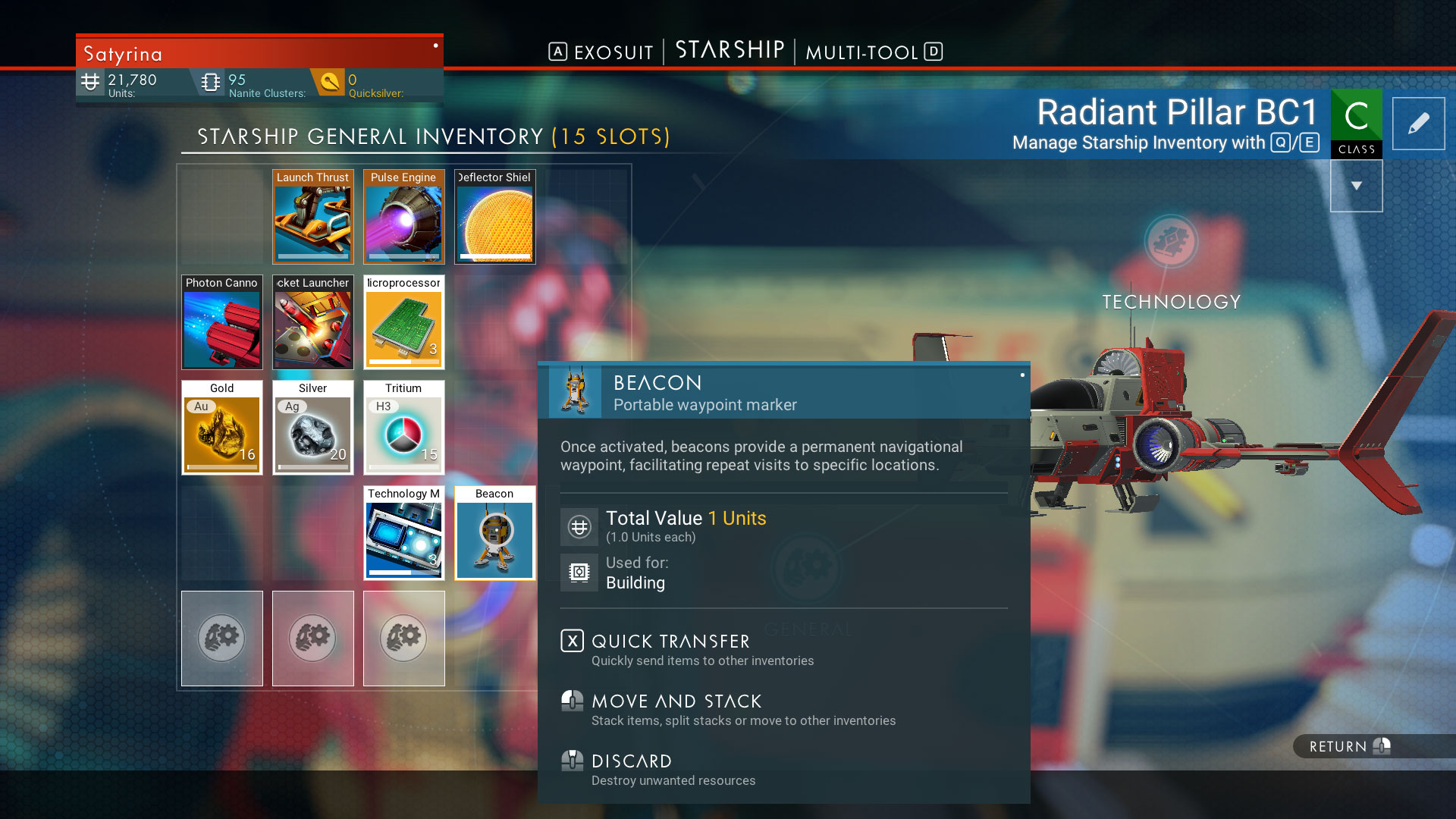No Man's Sky How to Save guide: How to use your ship and beacons to retain your progress
If you're wondering how to save in No Man's Sky, then follow our guide to creating restore points with your ship and beacons
A whole guide on trying to figure out how to save in No Man’s Sky? Well, yeah, you might need this since the game doesn’t really explain the process to you at all. It’s easy to get sucked into hours of intergalactic fun and the worst thing would be to lose any of your hard-earned No Man's Sky progress, especially if you’ve been spending your time animal-wrangling and star-chasing. To make sure that you’re keeping all of your units and your data safe, check out this guide on how to save in No Man’s Sky.
Saving in No Man's Sky With Your Ship

This is one of the ways in which No Man’s Sky introduces you to its limited auto-save system. Essentially, you don’t have to do anything special here; no need to manually toggle to anything or to access any complicated menus. Once you’ve gotten far enough in the main story quest to access your ship (which shouldn’t take more than half an hour), entering and exiting it will trigger a restore point. This is how you save the game automatically. This method works regardless of your location, so if you’ve been mining rare materials until the cows come home and it gets dark, we would recommend winging it quickly to your ship for safety and for the added assurance that all 10,000 Ferrite Dust that you mined over the course of the day will be protected.
Saving in No Man's Sky with Beacons

Aside from the autosave method which involves you always having to be by your ship, you can also invest in a beacon. These bad boys can be found on planets in random locations, whether it’s on top of a hillock populated by toxic plants or hanging around buildings or ruined ships. It’s as easy as walking up to one of these beacons and interacting with it in order to save the game.
However, if you can’t be bothered sprinting around to find an errant beacon here or there, then there’s also another solution available to those who consider themselves Crafting experts. You can build a beacon of your own to ensure that you can mark waypoints, and plopping down one on your planet will let you save at your leisure wherever this beacon may be. Those wanting to get particularly fancy with it can change the colors of the beacons after pressing Z to access the Build Menu, and the color of the beacon will correspond to how it’s marked on your navigational system. You can have up to five beacons on a planet at a time so you don’t have to run five hundred miles to get to one save point if that’s a worry for you. If you want to make a beacon, you’re going to require the following materials. This recipe was most recently changed in the NEXT update, and we’re not sure if this will change again with the Beyond patch but we will update this ingredient list if it does:
- Metal Plating x 1
- Ion Battery x 2
- Microprocessor x 1
Saving can be a bit of an opaque process thanks to the current state of the tutorial, but Hello Games has mentioned that they plan on refining this initial getting-to-know-you part of the game to make it clearer. Whether this means that the game will go through auto-saving and the like in greater detail remains to be seen, but until then, our streamlined guide should have you sorted out if you’re wanting to ensure that none of your progress in No Man’s Sky gets lost on your watch.
No Man's Sky tips | No Man's Sky cheats | How to make money fast in No Man's Sky | No Man's Sky storage | No Man's Sky hidden mechanics | No Man's Sky free freighter | No Man's Sky multiplayer | No Man's Sky Antimatter | No Man's Sky Atlas Pass | No Man's Sky Chromatic Metal | No Man's Sky Technology Modules | Best No Man's Sky bases | Best No Man's Sky mods
Weekly digests, tales from the communities you love, and more

I'm GamesRadar's Managing Editor for guides, which means I run GamesRadar's guides and tips content. I also write reviews, previews and features, largely about horror, action adventure, FPS and open world games. I previously worked on Kotaku, and the Official PlayStation Magazine and website.


